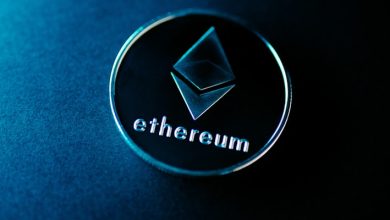NFT Market Sees Unprecedented Sales: What’s Behind the Boom?

- Exploring the surge in NFT sales and its impact on the art market
- Understanding the driving forces behind the NFT market’s rapid growth
- Analyzing the role of blockchain technology in the NFT boom
- Key factors contributing to the unprecedented success of NFT sales
- Challenges and opportunities in the evolving NFT marketplace
- Expert perspectives on the future of NFTs and digital collectibles
Exploring the surge in NFT sales and its impact on the art market
The surge in NFT sales has been making waves in the art market, with unprecedented amounts being exchanged for digital artwork. This trend has sparked interest and curiosity among art collectors and investors alike, as they try to understand the implications of this new form of ownership and investment. NFTs, or non-fungible tokens, have opened up a whole new world of possibilities for artists to monetize their work and for buyers to invest in unique pieces of digital art.
Understanding the driving forces behind the NFT market’s rapid growth
The rapid growth of the NFT market can be attributed to several driving forces that have fueled its unprecedented sales. One key factor behind this boom is the increased interest in digital art and collectibles among investors and collectors alike. The unique nature of NFTs, which are one-of-a-kind digital assets authenticated by blockchain technology, has captured the imagination of many individuals looking to diversify their portfolios.
Another driving force behind the NFT market’s growth is the rising popularity of decentralized finance (DeFi) platforms, which have provided a new avenue for buying, selling, and trading NFTs. DeFi protocols offer users a more decentralized and transparent way to engage with digital assets, making it easier for individuals to participate in the NFT market.
Additionally, the increasing mainstream media coverage of NFTs has helped to raise awareness and generate buzz around this emerging asset class. As more celebrities, artists, and athletes get involved in creating and selling NFTs, the market continues to attract new participants who are eager to own a piece of digital history.
Furthermore, the ease of access to NFT marketplaces and the ability to purchase NFTs using cryptocurrencies have also contributed to the market’s rapid growth. With platforms like OpenSea, Rarible, and Foundation making it simple for users to buy and sell NFTs, the barrier to entry for investors has been significantly lowered.
Overall, the combination of increased interest in digital assets, the rise of DeFi platforms, mainstream media coverage, and easy access to NFT marketplaces has created the perfect storm for the explosive growth of the NFT market. As more individuals and institutions continue to explore the possibilities of NFTs, it is likely that this trend will only continue to gain momentum in the coming months.
Analyzing the role of blockchain technology in the NFT boom
Blockchain technology has played a crucial role in fueling the recent surge in the NFT market. The secure and transparent nature of blockchain makes it an ideal platform for trading non-fungible tokens. By utilizing blockchain, NFT creators can verify the authenticity and ownership of their digital assets, providing buyers with confidence in their purchases.
Additionally, blockchain technology enables the creation of smart contracts, which are self-executing contracts with the terms of the agreement directly written into code. This feature automates the process of buying and selling NFTs, eliminating the need for intermediaries and reducing the risk of fraud. As a result, more artists and collectors are turning to blockchain to participate in the booming NFT market.
Furthermore, the decentralized nature of blockchain ensures that NFT transactions are secure and immutable. Each transaction is recorded on a distributed ledger, making it nearly impossible to alter or counterfeit NFT ownership records. This level of security and transparency has attracted a growing number of investors and collectors to the NFT space, driving up sales and prices to unprecedented levels.
In conclusion, the rise of NFTs can be largely attributed to the innovative capabilities of blockchain technology. As the NFT market continues to expand, blockchain will undoubtedly play a pivotal role in shaping its future growth and development. By leveraging the power of blockchain, NFT creators, buyers, and sellers can enjoy a secure, efficient, and trustworthy marketplace for digital assets.
Key factors contributing to the unprecedented success of NFT sales
The unprecedented success of NFT sales can be attributed to several key factors that have contributed to the growth of this market. One of the main reasons behind the boom in NFT sales is the increasing popularity of digital art and collectibles. As more artists and creators embrace the concept of non-fungible tokens, the demand for NFTs has skyrocketed.
Another factor driving the success of NFT sales is the sense of exclusivity and ownership that these tokens provide. By purchasing an NFT, collectors can own a unique piece of digital art or collectible that cannot be replicated or duplicated. This scarcity has led to a surge in demand for NFTs among art enthusiasts and collectors.
Additionally, the growing interest in blockchain technology has also played a significant role in the success of NFT sales. The transparent and secure nature of blockchain technology ensures that each NFT is authentic and verifiable, giving collectors peace of mind when making a purchase.
Challenges and opportunities in the evolving NFT marketplace
As the NFT marketplace continues to experience unprecedented growth, it is crucial to acknowledge the challenges and opportunities that come with this evolution. One of the main challenges facing the NFT market is the issue of scalability. With increasing demand for NFTs, platforms must find ways to handle the growing number of transactions efficiently.
Another challenge is the issue of copyright infringement. As the market expands, there is a risk of unauthorized use of intellectual property in NFTs. This has already led to legal disputes and calls for stricter regulations to protect creators’ rights.
On the flip side, the evolving NFT marketplace also presents unique opportunities for artists, collectors, and investors. NFTs offer a new way for artists to monetize their work, bypassing traditional gatekeepers and reaching a global audience directly.
For collectors, NFTs provide a chance to own rare digital assets that can appreciate in value over time. The scarcity and uniqueness of NFTs make them attractive investments for those looking to diversify their portfolios.
Overall, while the NFT market faces challenges in terms of scalability and copyright issues, it also offers exciting opportunities for creators and investors alike. By navigating these challenges effectively, the NFT marketplace can continue to thrive and innovate in the digital economy.
Expert perspectives on the future of NFTs and digital collectibles
Experts in the field of digital collectibles and NFTs have varying perspectives on the future of this rapidly growing market. Some believe that the current boom in NFT sales is just the beginning of a larger trend, driven by increased interest from both collectors and investors. Others are more cautious, warning of potential risks and uncertainties that could impact the long-term viability of NFTs as an asset class.
Many experts agree that the underlying technology behind NFTs, known as blockchain, has the potential to revolutionize the way we buy, sell, and trade digital assets. By creating a secure and transparent system for verifying ownership and authenticity, blockchain technology has opened up new possibilities for creators and collectors alike. This increased trust and efficiency could drive further growth in the NFT market in the coming years.
However, some experts are concerned about the sustainability of the current NFT boom. They point to issues such as environmental impact, market saturation, and regulatory challenges as potential obstacles to continued growth. As the market becomes more crowded and competitive, it may become harder for individual artists and creators to stand out and attract buyers.
Despite these challenges, many experts remain optimistic about the future of NFTs and digital collectibles. They believe that as the technology continues to evolve and mature, new opportunities will emerge for both creators and collectors. By staying informed and adapting to changing market conditions, individuals can position themselves for success in this exciting and dynamic industry.



